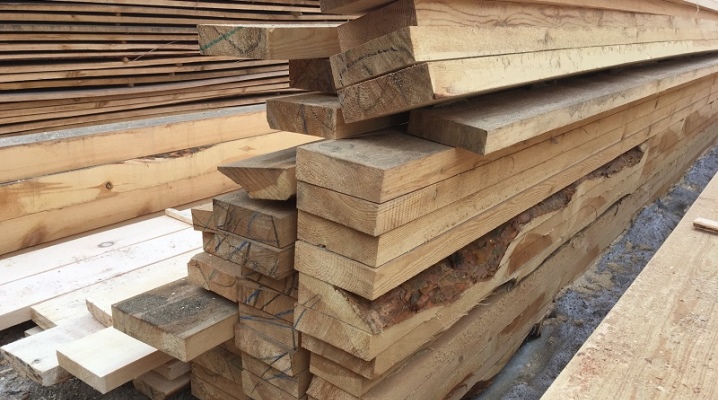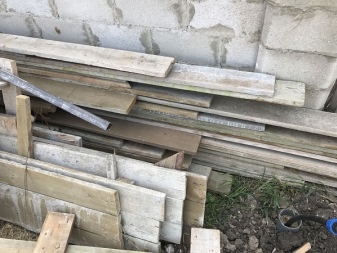All about formwork boards

Formwork is a special structure that is needed to lay the foundation. It is indispensable for the construction of both large and small structures. For its manufacture, special fasteners and boards are used, which are made from various types of wood. There are special requirements for this type of material.
Let's see what formwork boards can be, what thickness, length and width are needed? They use edged boards for various purposes. Depending on this, the dimensions of the lumber for the foundation formwork may be different. How to calculate them correctly?



Peculiarities
Formwork boards are actively used to design both strip and monolithic foundations. This lumber is excellent for a variety of structures, regardless of their level of complexity. It combines affordable cost and excellent performance. You can buy the necessary raw materials in almost any store of building and finishing materials. This type of product is presented in a rich assortment.
Another feature is the low weight of wood panels, compared to products made of metal and other materials. This simplifies the process of assembly and subsequent disassembly. The maximum weight of one shield is about 60 kilograms. With a low weight, they can boast of sufficient reliability and durability. Also, the boards are used for the formwork of ceilings, the foundation of the columns, the laying of the well, the design of the curb and the basement. Specialists from the construction industry point out that the quality of the formwork directly depends on which board was chosen for it.
A rich assortment of goods offers buyers freedom of choice, however, you need to be able to choose the right timber.


Wooden formwork is more common than specialty plastic or metal options. Such structures are used both for private construction and in the industrial sector. The boards for assembling the formwork must meet certain standards. We are talking about their thickness, strength and other characteristics. If wooden panels were made according to all the rules, using carefully selected and processed wood, then they can be reused. To make the concrete foundation even and flawless, the boards are processed. They are polished and planed. It is also necessary to properly secure the lumber so that the structure is reliable and strong. Low weight allows you to work without additional equipment and a large number of people.
Only an experienced specialist knows all the intricacies of formwork installation and can manufacture it in such a way that it can withstand the load of concrete and maintain its integrity. Professionals recommend using boards purchased from trusted hardware stores. Responsible retail outlets are careful about the choice of suppliers, controlling the quality of the offered goods. You can contact the manufacturer directly, especially if you need to purchase a large batch of boards. This will significantly save money. You can also buy ready-made formwork panels. They will cost more than boards, however, you do not have to waste time on assembly.
Before buying, you need to make sure that the finished shields are suitable for the size of the foundation base and correspond to the proper level of quality.


Materials (edit)
In the field of making formwork boards, manufacturers use different grades. The best and rare breeds are usually not used. Inexpensive wood is used. This is due to the fact that the possibility of reusing the boards is limited - there is no point in spending money on expensive varieties. The board used for formwork can be edged or unedged. This parameter is important to consider when choosing and installing wooden shields. The side of the lumber that will come into contact with the concrete must be carefully sanded.
Deciduous trees are rarely used. Modern brands opt for coniferous species (spruce, pine or fir). The breed is of great importance, especially if the formwork is going to be used more than once. Regardless of what kind of wood the boards were made from, they must have certain characteristics. The note! Some people decide to make the formwork from a fence board to save money on the purchase of lumber. Experts do not support this idea and believe that it is better to buy a special board.



Dimensions (edit)
The first thing to look for when choosing a board is dimensions and thickness. You also need to consider the length, which depends on the trench. The lumber should be of such dimensions that, when installing wooden panels, they are slightly wider than the boundaries of the future foundation. As for the thickness, here you need to pay attention to the load that the liquid concrete has on the walls of the formwork. Professionals recommend purchasing boards, the thickness of which varies from 25 to 50 millimeters.
In some cases, you can choose lumber with an increased thickness, while boards thinner than 25 millimeters are better not to use. Otherwise, destruction of the structure is possible. The average width is 15 centimeters. This is the most common option and is considered standard.
Broader samples can also be found in the store and used without restrictions.



Technical requirements
Certain technical requirements are imposed on boards for formwork under the foundation. Natural raw materials must necessarily have smooth edges. This is the only way to assemble a high-quality and durable shield, which will be devoid of cracks, gaps, distortions and other flaws.
For laying massive foundations, it is recommended to use an edged board. This type of material is more reliable than other varieties. To lay the foundation of a fence or other similar structures, you can limit yourself to an unedged board.


Humidity
Humidity is an important indicator. Experts recommend giving preference to wood with a moisture content of 25% and above. This indicator is responsible for the following factors.
- The specified moisture level prevents the wood from being saturated with cement milk. This will allow the material to be reused.
- Wood has the ability to absorb the bonding components of concrete, which is why its strength characteristics are significantly reduced. If you choose wood with the required moisture content, concrete will not lose some of its properties.


Rigidity and strength
The wood must be able to handle the pressure from the concrete. This indicator will only increase when using a vibrating tool. Strength and rigidity are responsible for these parameters. To calculate the load, engineers use a factor of 1.2. In this case, the load on the structure increases by 20%. Particular attention should be paid to edged boards and their degree of hardness.
If the wood is too soft, it can crack during the pouring of the concrete. Strength and rigidity are responsible for the reliability and integrity of the structure.



Cracking resistance
Another required characteristic. Soft woods are susceptible to cracking, especially when subjected to stress. Experienced builders must take this indicator into account, which is why birch and other deciduous trees are bypassed. It is also necessary to take into account such a characteristic - a neutral or alkaline reaction. Concrete does not react well to acidic environments. It negatively affects his grasping ability. If the type of wood has a high acidity value, it cannot be used for formwork. For this reason, experts do not use oak.
The last requirement for suitable wood is a low price. In order not to waste your money, contact only trusted retail outlets. If possible, carefully inspect the material for defects. Boards that are not premium will not look perfect. Despite this, one must not forget about meeting certain requirements.


How to calculate the quantity?
Competent calculation will protect you from unnecessary spending. In order not to risk it, you can use the services of a professional construction team. They independently calculate the required amount of materials. You can also make a calculation on your own. To do this, you need to know the approximate thickness of the boards, as well as the height and length of the formwork. Let's look at a specific example. Parameters - the total length of the formwork is 100 meters. Height - 0.7 meters. In this case, it is recommended to use boards with a thickness of 0.04 meters. Using these parameters, you can make a calculation according to the following scheme.
The equation looks like this: 100 * 0.7 * 0.04 = 2.8 m3. As a result, the required volume of material is obtained. Experts recommend purchasing raw materials in stock. If the result is 2.8 cubic meters, you should buy from 3 to 3.5 cubic meters of material.
Professionals recommend buying the right amount of lumber at a time and from one supplier so that the wood is from the same batch.















The comment was sent successfully.